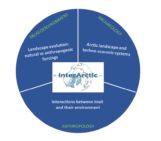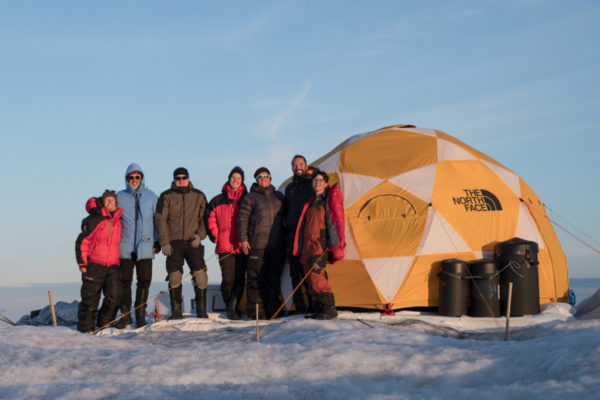
Insights into the EU project Deep Purple, fieldwork during the COVID-19 pandemic and doing research in a camp on the Greenland Ice Sheet. Written by Ph.D. students Rey Mourot (GFZ Potsdam), Laura Halbach (Aarhus University) and Eva Doting (Aarhus University).
On maps, Greenland is shown as a massive white island. This vast ice and snow cover plays a vital role in reflecting incoming solar radiation and provides an important cooling contribution to Earth’s climate system. However, in recent years, research has shown that the Greenland Ice Sheet is not the pristine white mass it was once thought to be. Ice and snow have been found to be home to diverse microbial communities that ‘bloom’ on the ice during the summer season, much like algal blooms that may form on lakes in summer. On the Greenland Ice Sheet, such blooms darken the ice surface and thereby increase the amount of solar energy that is absorbed instead of being reflected by the ice surface. This in turn leads to an increase in temperature and ice surface melt. We, three young scientists, participated in the EU-funded project Deep Purple’s first expedition in 2020 to study these blooms on the ice. The expedition was fully devoted to understanding the survival of the microbes and their impact on their environment.
The project: Deep Purple
In continuation of work done in the Black & Bloom project, the ERC Synergy Grant Deep Purple aims to investigate the physical and microbial processes that constrain or promote the dark blooms on the ice. Deep Purple is a six-year project that was initiated in January 2020 and is led by prof. Liane G. Benning (Interface Geochemistry, GFZ Potsdam), prof. Alexandre Anesio (Polar Microbiology, Aarhus University) and prof. Martyn Tranter (Polar Biogeochemistry, Aarhus University). Using multidisciplinary approaches covering chemistry, biology and physics, Deep Purple aims to provide a step-change in our understanding of the factors that control glacier algae blooms. A process-based understanding of blooming is essential for modeling future Greenland Ice Sheet melt. Objectives include the characterization of the hydrology and nutrient status of the complex mosaic of wet ice habitats, a quantitative assessment of why and how mineral dust particles contained within the ice affect glacier algae blooms and identification of key physiological adaptations that enable microbes to survive on the ice. Fieldwork is an important component of Deep Purple, and will take place on various locations on the Greenland Ice Sheet (Figure 2). During these expeditions, Ph.D. students, postdocs and professors will work together to collect samples, measurements and observations that will provide the foundation for all Deep Purple work.
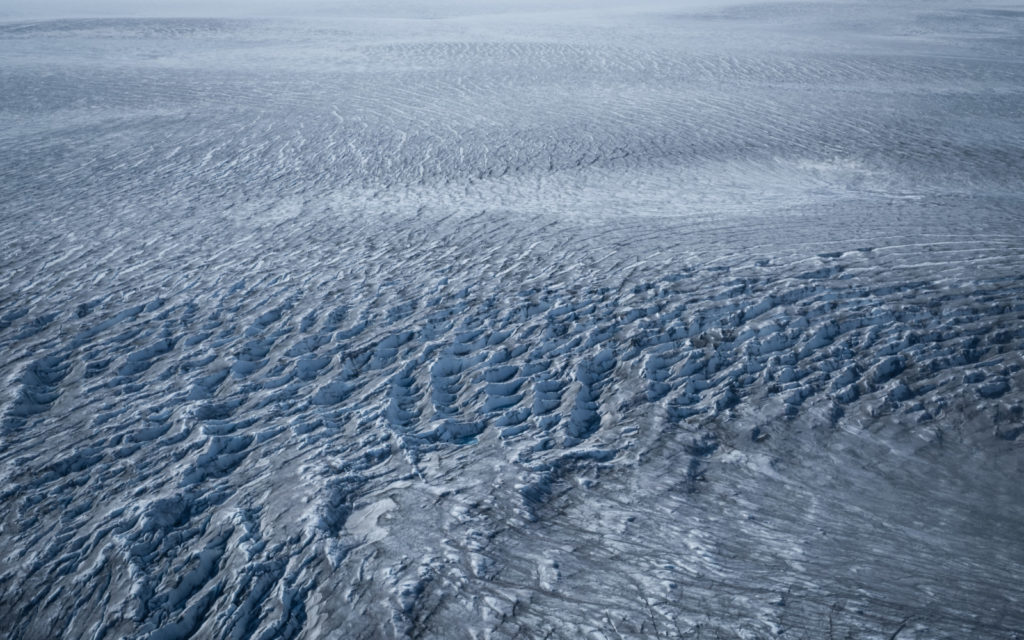
Figure 2 (by Laura Halbach): the surface of the Greenland Ice Sheet: how much of the dark area is glacier algae? It is one of the goals of Deep Purple to find this out!
The pandemic
Unfortunately, the onset of the COVID-19 pandemic led to the cancellation of the first Deep Purple expedition, which had originally been planned for spring 2020. A second 2020 expedition was planned for the summer, but it soon became clear that 2020 would be far from an ordinary fieldwork year. After weeks of speculation, calls to authorities, and waiting games, we almost gave up hope for the Deep Purple summer expedition. Then, in the second week of May, hope started to bloom and we decided to go full force ahead to prepare for fieldwork in July 2020, just in case we’d be able to make it there after all. By early June, over 1400 kg of gear, food and lab supplies had been picked up from Potsdam and Aarhus University and was enroute to Qaqortoq, south Greenland. Once everything was shipped, we spent the next week planning out sampling strategies and experiments while keeping a close eye on any changes to travel restrictions. Following an incredible effort from the entire Deep Purple team (Figure 1) as well as Greenlandic authorities and COVID tests for all, on June 30 it was game-on for a three-week camp on the southern Greenland Ice Sheet.
A camp on the ice
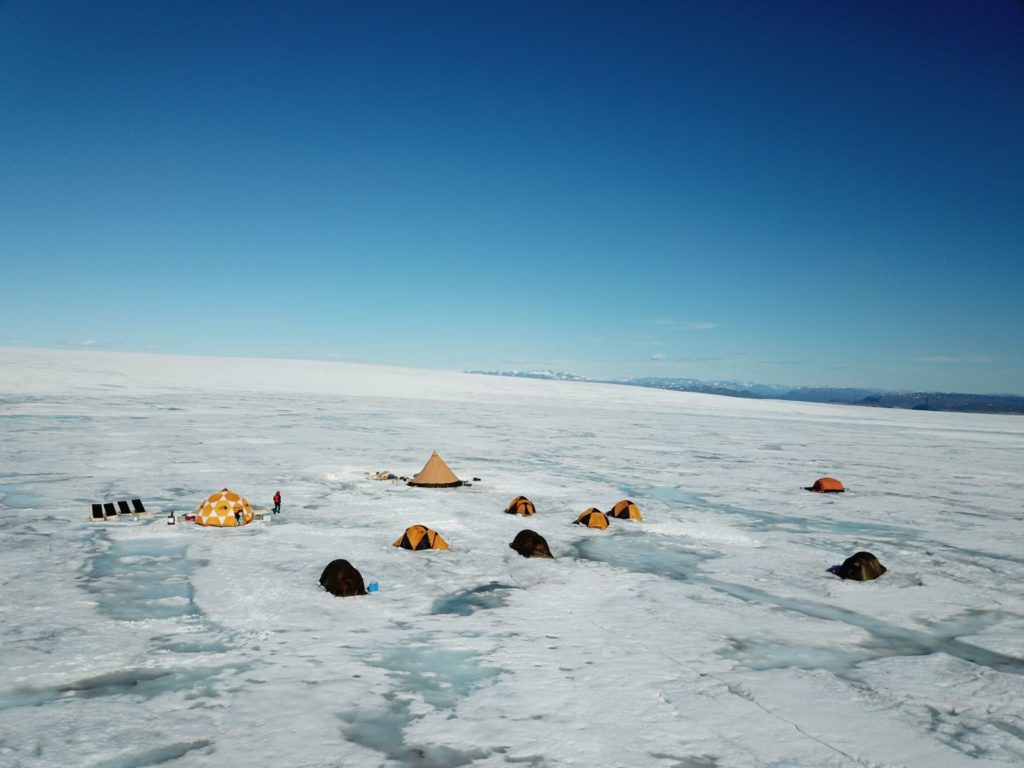
Figure 3 (by Rey Mourot): view of the camp of the start of the fieldwork. The ice sheet surface is covered by snow and small ponds. Each person had their own tent, and we shared the tipi as a kitchen, and the orange dome as a lab tent. Solar panels were supplying energy to the whole camp, and particularly to the pumps used to process samples.
Once the helicopter landed on ice, it was time for a little happy-dance before setting up the camp that would be our home for the next three weeks. All members, which included the three principle investigators (Liane, Alex and Martyn), all-round safety and logistics manager (Lasse) and three Ph.D. students (Rey, Laura and Eva), had an overwhelming feeling of gratitude and excitement for the chance to conduct fieldwork in such an unprecedented year. Over the next few days, we set up a camp (Figure 3) consisting of a microscope lab-tent, a filtration lab-tent (Figure 4), a personal tent for each team member and a kitchen tent, where we met every morning and evening for our meals, debriefing and science talk. During the first five days of the expedition, we were joined by Prof. Jason Box, who is a professor in glaciology at the Geological Survey of Denmark and Greenland. Jason installed a rain gauge on a nunatak (a land ridge that protrudes from the ice) close to our campsite. The rain gauge will collect valuable data on precipitation on the southern Greenland Ice Sheet and send it to Denmark along with other important meteorological information collected by the PROMICE weather stations close to our camp. As luck would have it, just after Jason left the camp, we were treated to two full days of rain. This was a ‘nice’ reminder of how much the camping life on the ice is affected by the weather: in a span of days, we could go from bright moments under the sunlight trying to avoid getting sunburned, to protecting ourselves from rain and watching over each other to ensure that nobody got hypothermia from walking around in wet clothes, to securing all the tents for stormy nights with up to 85 km/h wind speeds. The main challenge was to keep our underlayers and the inside of our tents dry, because wet fabric means being cold for hours and the constant rain made the drying process difficult and slow. Another issue that arose during these rainy days was the fact that the thick cloud cover meant that our solar panels, which were providing power needed to run all lab equipment, were not charging fast enough. Thus, on rainy days, we had to turn off our filtration pumps and use hand pumps to filter several liters of melted snow and ice that were on the lab-menu for that day. Luckily, a good camp routine, teamwork, our shared excitement about the samples we were collecting, and the unspoken competition surrounding making the best meal of the expedition, kept us motivated throughout the ever-changing weather conditions.
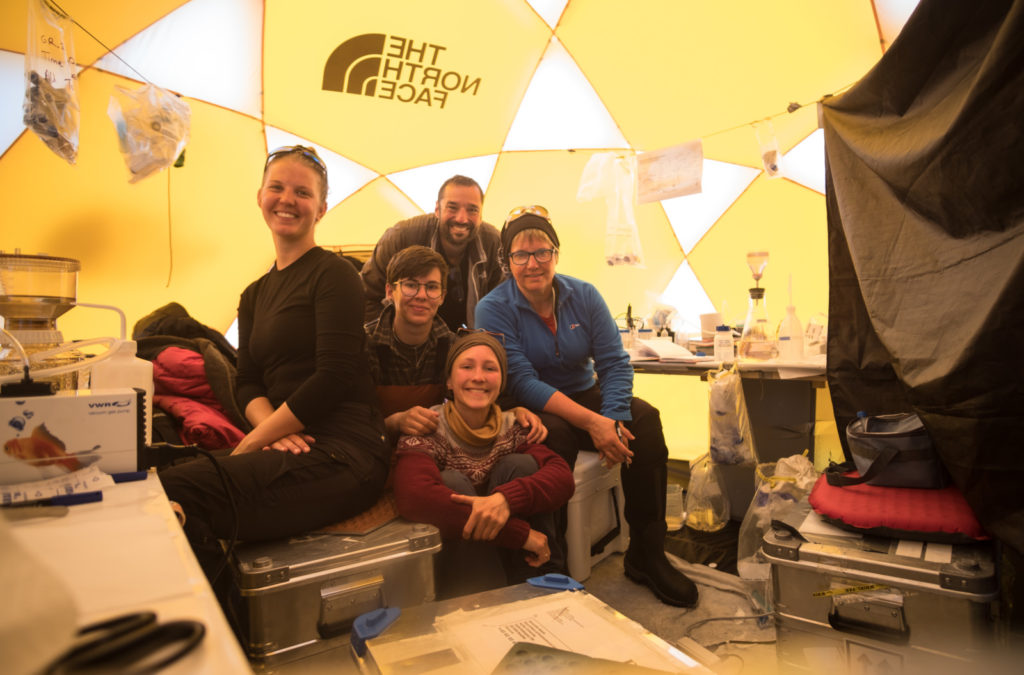
Figure 4 (by Laura Halbach): family picture of the lab team in the middle of their scientific set-ups: Eva, Rey, Alex, Laura, Liane.
Observations on the ice
Before we even got to our campsite, our pilot Pilu (Sermeq Helicopters), who had played an invaluable role in our preparations through his experience and excellent knowledge of the area he grew up in, described some of the observations he had made over the years. He has seen glaciers retreat and darken while the weather has clearly become milder, making ‘beach days’ more and more common. While this is creating some opportunities for cultivation and becoming more self-sustaining, the changing climate is also leading to a loss of culture, traditions and natural heritage. During summer, we could closely observe the real-time changes in snow and ice cover. On June 30th, the day of our arrival, our camp was still in the middle of thick and fresh snow, but through the course of our stay, the landscape changed dramatically, rapidly uncovering bare ice while the melting snow drained into a tributary on the ice a couple of hundred meters from our camp. We noticed how much the weather conditions influenced the albedo (a low albedo surface absorbs more of the solar energy that hits it compared to a high albedo surface) and the melt rate. For example, we observed the effects of rain on the dispersion of dark blooms and temporary re-whitening of the ice surface on cold sunny days. Over the course of three weeks, we observed an average surface ablation of 4.4 cm per day (average of 40 ablation stakes), meaning a rapid ice melt just below our feet. On July 20th, when we packed up our camp and flew back to civilization, our camping site was much darker: black cryoconite holes (water-filled depressions on the ice surface that are filled with a dark mix of microbes and mineral) that probably formed during the past years had been revealed from below the snow cover and new ones had formed. We could clearly see how the landscape around us had changed and astonishing glacier algae blooms (e.g. Figure 5) had darkened the once snow-covered site.
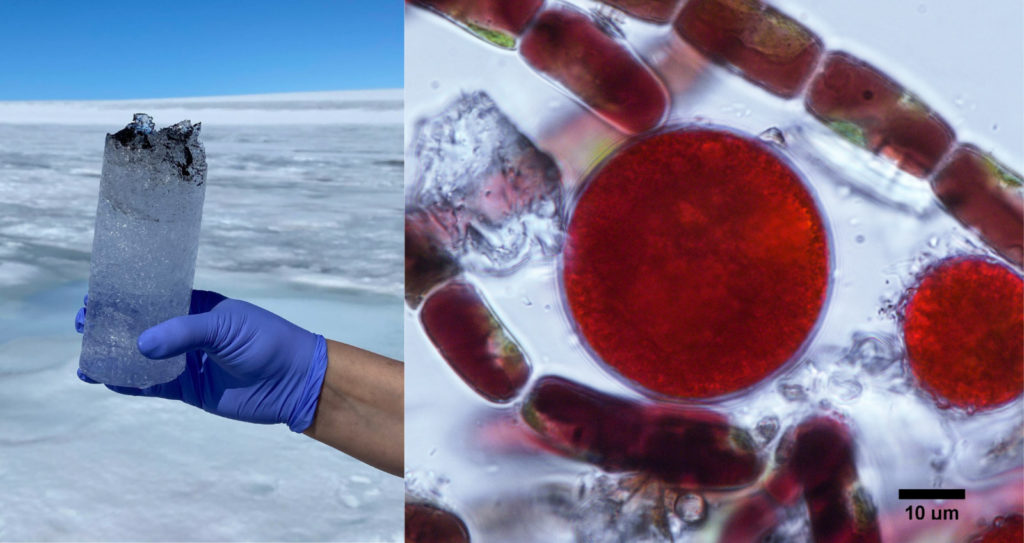
Figure 5: left photo (by Liane Benning): a piece of ice core taken by Liane and Rey who would like to find out how much algal cells can be found within older ice layers and whether they are still alive. This will yield important knowledge about the interannual survival of the algal communities. Rey will study these ice cores further in their Ph.D. project. Right photo (by Laura Halbach): microscopic image of the glacier microbial community showing snow (big round cell) and glacier algae (brown elongated cells).
This fieldwork was marked, as everything else this year, by the global pandemic making all logistics difficult and giving us reasonable doubts on if we could go to Greenland at all. Yet, we managed and can be more than proud on what we achieved: the team got to Greenland, we set up an ice camp withstanding heavy rain and strong winds, we fought together against moments of low spirits during constant rainfall and we collected valuable samples for a lot of analyses and science to follow up. Now that the Deep Purple team grew with more PhD students and post-doctoral researchers, the next fieldwork in Greenland – planned for summer 2021 – is subject of scientific dreams and excitement.
This post has been edited by the editorial board.
Further reading: Webpage of Deep Purple Project Webpage of Black and Bloom Project Anesio, A. M., Lutz, S., Chrismas, N. A. M., and Benning, L. G. (2017). The microbiome of glaciers and ice sheets. npj Biofilms Microbiomes 3, 0–1. doi:10.1038/s41522-017-0019-0. Lutz, S., Anesio, A. M., Jorge Villar, S. E., and Benning, L. G. (2014). Variations of algal communities cause darkening of a Greenland glacier. FEMS Microbiol. Ecol. 89, 402–414. doi:10.1111/1574-6941.12351. Williamson, C. J., Anesio, A. M., Cook, J., Tedstone, A., Poniecka, E., Holland, A., et al. (2018). Ice algal bloom development on the surface of the Greenland Ice Sheet. FEMS Microbiol. Ecol. 94, 1–10. doi:10.1093/femsec/fiy025.

